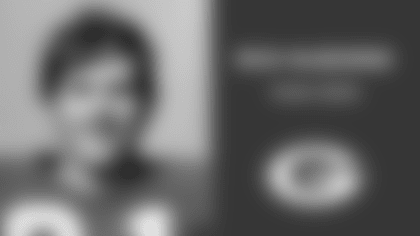Last year at this time, heading into the organized team activities (OTAs), the Green Bay Packers were in a major transition stage defensively.
On the field, players in the front seven were shifting positions, some from defensive tackle to end, others from end to outside linebacker.
In its offices, the newly assembled coaching staff was still evaluating the players it had to work with, figuring out where everybody fit best.
And in the film room, the players were being shown video of other teams that played the 3-4 scheme, to learn the roles and responsibilities before playing the scheme themselves.
Fast forward 12 months and the defense is immersed in an entirely different stage of development.
Over the next several weeks, while the offense will be starting its usual competitions on the offensive line and the special teams will be getting a look at potential punters and returners, it's the defense whose OTAs will be most unlike those it conducted in 2009, when everything was new.
"The biggest difference is the experience that the majority of our players have with playing the defense," defensive coordinator Dom Capers said. "This time last year when we were teaching, we were showing (film) cut-ups of other teams, and now we have our own cut-ups to look at where we can see our guys playing the techniques. So I think they've got a much better understanding at this point in time than they had a year ago.
"Now what we have to do is focus in on all the little things that will enable us to make the kind of improvement in Year 2 that we'd like."
That improvement for the most part is targeted for the high-powered passing offenses that broke down an otherwise stout defense, one that made the transition to the 3-4 smoothly and effectively in its first year.
The Packers finished 2009 ranked No. 2 in the league in yards allowed and No. 1 against the run, so there's plenty to build on. However, the results were frustrating against some of the league's highly ranked passing attacks.
Including the playoffs but not counting the regular-season finale at Arizona when the Cardinals rested many starters, the Packers played five games against teams ranked in the top 12 in passing offense last year and went 1-4. Green Bay beat Dallas (ranked sixth), but lost to Minnesota twice (eighth), to Pittsburgh (ninth), and to Arizona (12th) in the playoffs despite scoring an average of 32.5 points in those defeats. The Packers went 9-2 against the rest of the schedule.
So the challenge is trying to find the balance between focusing on the areas that need improvement without sacrificing the success established elsewhere. That's what Capers will be working on during the OTAs as he introduces the tweaks and adjustments to the defense from Year 1.
"It comes back to what your philosophy is," he said. "I still believe that your percentages of having success go up if you can turn games into one-dimensional games. Now, there's an awful lot of things that we can do better, with the combination of both coverage and pressure, against those teams that are going to put three and four wide receivers out there, and you have to be aware of your matchups in those situations. I'm convinced that we can do a better job in those areas."
Working in the Packers' favor is the continuity on the defensive staff, which is intact for the second straight year, and the coaches' familiarity with the players, except for the rookies added to the roster in the last few weeks.
{sportsad300}Capers noted that all the time spent together as coaches and players teaching and learning the system last year will improve the communication between all parties. And that improvement should translate to better communication in the heat of battle on the field, an aspect the unit can finally focus on now with the full-squad on-field workouts that begin Tuesday.
"The best defenses I've been around have been the best communicating defenses," Capers said. "We have a series of verbal calls in communication and visual signals, and when everybody is on and you hear them and there's no hesitation, those 11 guys sense and feel the confidence of it. When there's hesitation and you don't feel that, you know that somewhere in there somebody's uncertain.
"Those are things you pick up on, and that's what we're going to try to accomplish here in these OTAs. We want to come out of this with a base understanding of not only what to do, but how to do it, and to be able to do it together where you feel a good cohesive unit with good verbal and visual communication."
The defense certainly had that most of the time in Year 1. The task is to get it even more of the time, if not all of the time, in Year 2, and that process starts this week.
"Our goal is to become consistent week in and week out," Capers said. "That involves many things in this league. I think it involves a sense of competitive maturity, of understanding that everything you do you have to do with a sense of urgency.
"We felt the second half of the season we put together a pretty good string of games, but then the Pittsburgh game and the Arizona playoff game certainly weren't up to the standards that we set. So we have to learn from that, and I think our guys will. They've got a lot of drive, and they understand to do what we want to do, you've got to set a high standard and make sure it isn't compromised at any place along the way."














